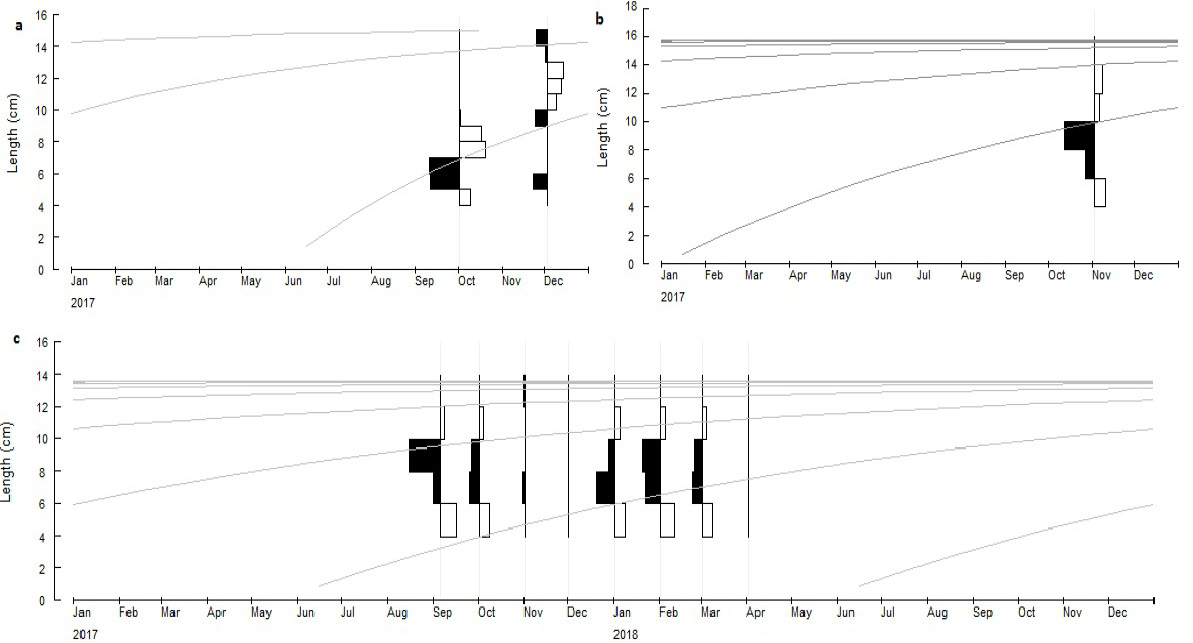Dynamics and Potential of Commercially Harvested Shrimps by Estuarine Set Bagnet in the Indus River Estuary, Sindh, Pakistan
Dynamics and Potential of Commercially Harvested Shrimps by Estuarine Set Bagnet in the Indus River Estuary, Sindh, Pakistan
Nazia Qamar1,2*, Sher Khan Panhwar2 and Wang Ping1
The total landing record of the Penaeus spp. Metapenaeaus spp, Parapenopsis stylifera, total catch (metric catch) and effort is in the form of number of fishermen, time series data from 1999- 2009 in Pakistan. (The data obtained from the Fisheries Statistics Book of MFD, West Warf, fish harbor Karachi, Govt of Pakistan).
Growth curve derived by the ELEFAN 1 computer program for three species, Exopalaemon styliferus (a), Metapenaeus monoceros (b), Parapenaeopsis stylifera (c).
Length converted catch curve of three shrimps Exopalaemon Styliferus (a), Metapenaeus monoceros (b), Parapenaeopsis stylifera (c) inhibiting along Indus Delta.
Seasonal recruitment pattern of three shrimps Exopalaemon styliferus (a), Metapenaeus monoceros (b), Parapenaeopsis stylifera (c) inhabiting along Indus Delta.
Relative yield and biomass per recruit analysis of three shrimps Exopalaemon styliferus (a), Metapenaeus monoceros (b), Parapenaeopsis stylifera (c) exploited from Indus delta with current LC.
Growth curves on growth parameters estimated by model progression Exopalaemon styliferus, Metapenaeus monoceros, Parapenaeopsis stylifera.
Growth curves on growth parameters estimated by model progression Exopalaemon styliferus, Metapenaeus monoceros, Parapenaeopsis stylifera.


















